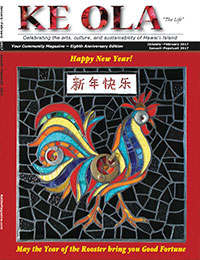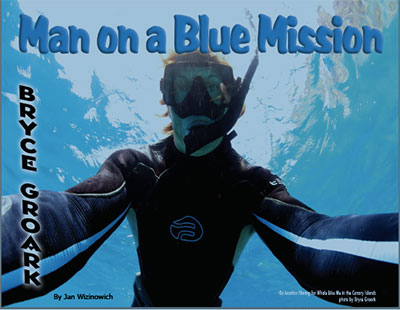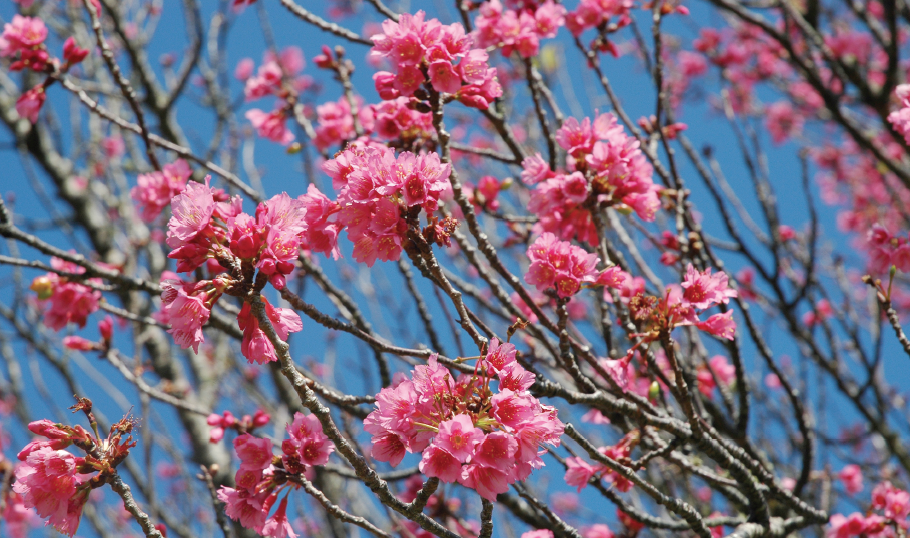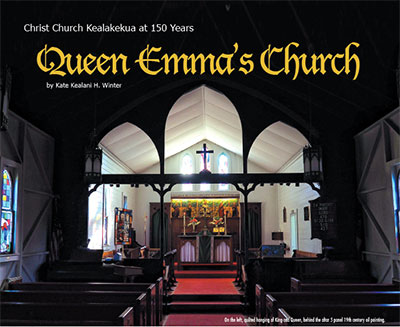Kainaliu Town
 Venturing south from Kailua-Kona is the charming town of Kainaliu. Whistle-stop in size, this quaint, island-style locale is named for an ancient canoe bailer who served under King Keawenuia‘umi in the 16th Century. Kainaliu means “bail out the bilge,” and was originally the name of a small village on the coastline, located in the ahupua‘a (land division) of Honuaino. Canoe paddlers coming off the rough waters and into Kealakekua Bay found Kainaliu a calm place to bail their canoes. Today, Kainaliu is an inland town, however historically it was located on the shore.
Venturing south from Kailua-Kona is the charming town of Kainaliu. Whistle-stop in size, this quaint, island-style locale is named for an ancient canoe bailer who served under King Keawenuia‘umi in the 16th Century. Kainaliu means “bail out the bilge,” and was originally the name of a small village on the coastline, located in the ahupua‘a (land division) of Honuaino. Canoe paddlers coming off the rough waters and into Kealakekua Bay found Kainaliu a calm place to bail their canoes. Today, Kainaliu is an inland town, however historically it was located on the shore.

People started migrating mauka (inland) from that original coastal settlement into what is currently known as Kainaliu town. The late Uncle Billy Paris, a respected elder and historian, believed the inland town of Kainaliu to be misnamed, and said it should have been called “Honuaino Village,” after the ahupua‘a in which it is located. However, the name Kainaliu took hold and the town became a prosperous hub for local residents.
The history of Kainaliu dates back to the early coffee farming days when immigrants came to Hawai‘i in search of a new life and hopes of creating a brighter future for themselves and their families. As the population grew, so did the town, as local residents needed places to purchase farming supplies and groceries.
The sleepy little town of Kainaliu began bustling from the demands of coffee farmers and ranchers who settled the area in the early 20th Century. By 1920, small mom and pop shops opened their doors to provide produce and necessities to the rural residents. Farmers and ranchers would tie their donkeys to the hitching posts lining the main street, so the trusty beasts of burden could transport the heavy bags of flour and rice back home.
The early days of Kainaliu sound simple and peaceful, but this wasn’t always the case. In 1867, prior to Kainaliu being recognized as a legitimate town, Lanakila Church was built on the northern end of town by the Reverend John D. Paris. Located on the makai (ocean side) of the highway, Lanakila was one of eleven churches Reverend Paris built on the island of Hawai‘i. Although the church grounds exude a sense of peace and serenity today, its earlier days tell a different story.
The 19th century was a time of uncertainty and unprecedented social change. With the end of the kapu (taboo) system in 1819, along with the influx of alcohol, increased access to firearms, and a changing legal and social landscape, conflicts among native Hawaiians and immigrants sometimes led to violent confrontations. The Kaona Uprising was one of the most infamous events of the 19th century and is thought to have started at Lanakila Church.
Historical notes from the Reverend Paris tell a story of major discontent among the charismatic self-proclaimed prophet, Joseph Kaona, and his followers. In 1868, Kaona persuaded a loyal group of proselytes that the end of the world was near and that he was the only true prophet of Jehovah. Convincing his followers they would all perish unless they followed his lead, Kaona and his group took possession of Lanakila Church, claiming it their new residence. Reverend Paris had Kaona and his followers evicted by order of Governess Ke‘elikolani, and the group subsequently set up camp illegally for several months on private property nearby.
Kona’s chief law enforcement official, Sheriff Neville, served Kaona with eviction papers, yet according to Reverend Paris’s notes, “The rebel spat on the paper, tore it into pieces, and stamped upon it.” Kaona’s band of followers had grown into the hundreds when Sheriff Neville decided to enter Kaona’s camp one last time, determined to evict the group, using force if necessary. The confrontation led to a violent encounter resulting in the bloody death of Sheriff Neville and a native Hawaiian police officer.
It wasn’t long until troops arrived from O‘ahu aboard the steamer Kīlauea to extinguish the rebellion and apprehend Kaona and his followers. Kaona was sentenced to 20 years incarceration for second-degree murder. He was later pardoned by King Kalākaua and spent the rest of his days in Kona where he died in 1883. Reverend Paris died in 1892, and he and his family are buried in the church’s cemetery.
Although we only have a one-sided account of the confrontation, it’s clear the lovely town of Kainaliu has more of a dramatic and salacious history than first meets the eye. After the Kaona Uprising, the coffee and ranching industries began to boom, and commercial developments in Kainaliu started to spring up in support of local residents and workers.
Many of the new establishments were owned and operated by Japanese families, including Oshima’s drugstore, established in 1926. Oshima’s still operates today and offers an eclectic variety of products, including housewares, trinkets, fishing supplies, candies, and more. Described as “fun and funky,” visitors enjoy perusing the aisles of Oshima’s to see what kind of treasures are hidden among its wares.
Kimura’s fabric store was founded in 1927 and supplies shoppers with many types of fabrics, including aloha print and quilting, plus out-of-the-ordinary Japanese products. Locals and guests alike enjoy browsing for treasures less commonly found in the more traditional fabric shops.
In 1932, the movies came to town when the Tanimoto Theater opened its doors. Designed by William Harold Lee, the theater seated 325 people and entertained local residents, mostly workers from the coffee farms. As the theater grew in popularity, its repertoire of films expanded. Mondays were Japanese movie nights, Philippine movies played on Wednesdays, and American films were shown on Fridays. The theater became the hot spot in town and provided the primary entertainment for the residents of Kailua-Kona. In 1939, the theater produced its first live stage production with, Who Wouldn’t Be Crazy?, marking the beginning of community theater in West Hawai‘i, a tradition that is still going strong today.
Tanimoto Theater changed it’s name to Aloha Theatre after World War II. In the following four decades, the theater vacillated between being a movie house and being a live community theater. In 2003, it became the home theater for the Aloha Performing Arts Company (APAC), a thriving group of thespians dedicated to bringing live performance art to West Hawai‘i through their annual presenting seasons. The Aloha Performing Arts Company recently purchased the theater in 2016. The Aloha Theatre is the oldest theater in Kailua-Kona that is still open and thriving.
Doors away from the Aloha Theatre is Standard Bakery, a leading supplier of baked goods for 70 years. Standard Bakery is known for baked goods that are made from scratch, using the best ingredients and baked fresh daily. The bakery was founded on the promise of creating baked goods that have exceptional taste at reasonable prices; a goal that continues to be delivered decades later.
In 1948, Kainaliu experienced a devastating fire behind Oshima’s barber shop. The theater was spared, however the fire destroyed many structures on the makai (ocean) side of the town, including Kimura’s Store and Oshima’s Dry Goods, both of which were since rebuilt. In the meantime, the coffee industry was continuing to thrive.
Kona Coffee was first mentioned in writing in 1840, and although coffee was planted in multiple locations around Hawai‘i Island, it thrived in the Kona District. By the 1920s, coffee was becoming a bustling economic industry in Kainaliu. At that time, Māmalahoa Highway was a dirt road that connected the coffee farms between the towns of Hōlualoa, Kainaliu, and south through Captain Cook.
The original Kona Coffee farmers of Kainaliu were primarily Japanese second-sons that migrated to Hawai‘i in search of a better life. In traditional Japanese society, the second-born sons did not inherit their father’s property; therefore they were more likely to venture out of their homeland to create new lives for themselves. Many took the opportunity to lease portions of land for coffee farming, and today many of these Japanese farmers are credited with giving Kona coffee the stellar reputation it has today.
Today, most of the coffee grown in Kailua-Kona is cultivated on land owned by the Kamehameha Schools Bishop Estate, which was created in 1884 by the late Princess Bernice Pauahi Bishop. The estate leases more than 1,200 acres to more than 600 coffee farmers in Kainaliu and the surrounding Kona area. The typical size farm lease is relatively small, averaging only seven acres, with some of the farms being in the same family for five generations.
Kainaliu continues to be a world-famous coffee-producing town, with successful plantations such as Kona Joe’s and Mountain Thunder, which attract coffee loving visitors from around the world.
At an elevation of 1,394 feet, Kainaliu boasts refurbished storefronts, art galleries, restaurants, a bakery, quaint specialty shops, and a bit of relief from the Kailua-Kona heat. Many of the buildings from the 1920s and 1950s still remain, some with their original tenants. Walking through town now, there’s a variety of offerings to choose from. Paradise Found Boutique offers a beautiful selection of women’s clothing and Aloha shirts for men. For the music lovers, Kiernan Music is home of West Hawai‘i’s finest selection of new, used, and vintage guitars and ‘ukuleles. If you are looking for an extensive collection of art and gift-giving offerings, Kathleen Dunphey Studio features art made from a collage of objects, while Showcase Gallery and Lavender Moon display art from artists all over Hawai‘i. Without a doubt, Kainaliu lives up to its reputation as a well-preserved example of an old-time mainstreet with everything from a local candy store to fine art.
On the southern border of Kainaliu is another delightful stop with a collection of eclectic storefronts at Mango Court, where you can dine on fresh salads and burgers, satisfy your sweet tooth with homemade gelato, and shop at the fine art collective of Cliff Johns Gallery with the most comprehensive collection of master woodworkers on Hawai‘i Island.
Up until November 2015, a two-lane highway was the only road connecting Kailua Village to Kainaliu. Traffic jams between the two towns during rush hour was referred to by locals as the “Kainaliu Crawl.” In November 2016, the long-awaited 2.2 mile, $27.9 million segment of the Māmalahoa Highway Bypass opened up to enthusiastic motorists making the daily journey. The project certainly didn’t happen overnight, as the relief highway was first envisioned in 1960. It wasn’t until January 2013 when the first portion of the Māmalahoa Highway Bypass opened daily, with no vehicle restrictions. Ground broke on the southern section of the bypass in July of 2014, and finally, in November of 2016, the 2.2 mile southern segment of Māmalahoa Highway Bypass opened, providing an alternative traffic route from Ali‘i Drive in Kailua-Kona to Nāpō‘opo‘o Road in Captain Cook.
Kainaliu town continues to charm visitors with its old-fashioned, island-style vibe and artistic flare. Residents and visitors from all over enjoy spending time in this quirky, funky village in the middle of coffee country. Although rustic in appearance, it’s the perfect spot for a night out for dining at one of Kainaliu’s restaurants and catching a live theater performance at the historical Aloha Theatre. During the day, tour one of the coffee plantations, sip a cup of Kona coffee and talk story while taking in the surrounding traditions of this captivating town steeped in Hawaiian history.
Resources:
Aloha Theatre, Eight Decades of History, dedication and creativity: West Hawai‘i Today; November 13, 2015
Lanakila Church: Kona Historical Society website; Retrieved November 2016
The History of Kainaliu Town: Big Island Television; February, 2011
Contact writer/photographer Karen Rose:


